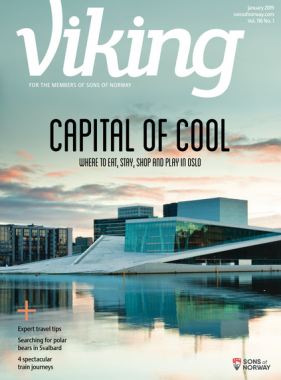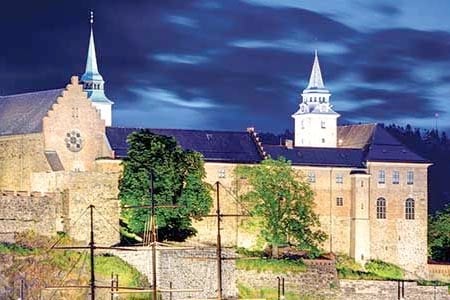If you’re making plans to visit Norway, check out the January issue of Viking magazine. It’s brimming with travel advice, expert tips and recommendations for exploring Norway from north to south. Whether you’re looking to take a spectacular train journey, search for polar bears in Svalbard or explore Norway’s vibrant capital city, there are ideas for every type of traveler. For history buffs visiting Oslo, here are our favorite spots to check out.
 |
|
History meets sophistication at Norway’s most famous hotel. For more than a century, The Grand Hotel has hosted dignitaries, celebrities and Nobel Peace Prize winners.
The 283 elegantly appointed rooms and lobby give a nod to the hotel’s history, with chandeliers, gilded mirrors and soft furnishings. Start the day with breakfast at The Grand Café—a favorite of Henrik Ibsen and Edvard Munch—before a day filled with exploring Oslo’s nearby landmarks. When you’re ready to unwind, head to the spa or have afternoon tea at Palmen restaurant in the lobby. For one of the best views of Oslo, head to Eight Rooftop Bar on the hotel’s 8th floor.
At the top of Karl Johans Gate sits one of the country’s most important buildings. The first foundation stone was laid by King Carl Johan in 1825, and the Palace was completed in 1849. Today, it’s the official residence of King Harald V and Queen Sonja. It’s also where the daily work of the monarchy is conducted and where the King presides over the Council of State. The building is designed in a neo-classical style with a buttercup façade of stuccoed brick. The Royal Palace Park surrounds the palace with grassy areas, trees, ponds and statues. Guided tours of the palace are available in the summer, taking visitors through some of the most beautiful rooms.
Step back in time to explore 700 years of Norwegian history at one of the country’s most important cultural monuments. It’s located in the heart of Oslo and has a rich historical connection to the Crown and State. Construction began in the late 1290s under King Håkon V. Its strategic location high on a rock overlooking the sea was important, as naval power was vital in protecting Oslo during sieges. Through the years, the fortress has been the site of dramatic military events, a prison and royal residence. Today, it’s a military base and home to cultural activities and government entertaining. The public can explore the Fortress on their own or take a guided tour.
This museum is home to the world’s strongest polar ship, the Fram. Explorers Fridtjof Nansen, Otto Sverdrup and Roald Amundsen took turns exploring the Arctic and Antarctica on this ship in the 19th and 20th centuries. Visitors can climb aboard to explore the vessel’s decks, lounges, cargo hold and engine room and try to imagine how the crew survived the coldest and most dangerous places on Earth. Next to the main building is the Gjøa, the first ship to successfully navigate the Northwest Passage.
Travel back in time to experience how Norwegians lived throughout history at the world’s oldest and largest open-air museum. The 160 buildings represent different regions of Norway and various time periods. Learn about traditional Norwegian architecture, farm life, and Sámi culture and watch traditional handicraft demonstrations. One of the biggest draws is the 13th-century Gol Stave Church.
In 1947, Norwegian explorer Thor Heyerdahl and his crew crossed the Pacific Ocean from Peru to Polynesia in 101 days on a balsawood raft called Kon-Tiki. Marvel at this primitive, handmade vessel along with reed boat Ra II that Heyerdahl sailed in 1970 from the west coast of Africa to Barbados. The award-winning documentary “Kon-Tiki” plays daily in the cinema on the lower level.
See the world’s best-preserved Viking ships up close. The three longships were built at the height of the Viking Age. The Oseberg was an elegant oak vessel with lots of Viking-style ornamentation. After the remains were found in 1903, it took 21 years to prepare the restore the ship. The Gokstad was built around 890 A.D. and was suited to discover, trade and Viking raids on the high seas. The Tune was small, fast and able to transport people quickly. Three times each hour, a film plays on the museun’s vaulted ceiling and gives visitors a unique visual experience about how the ships were built.

